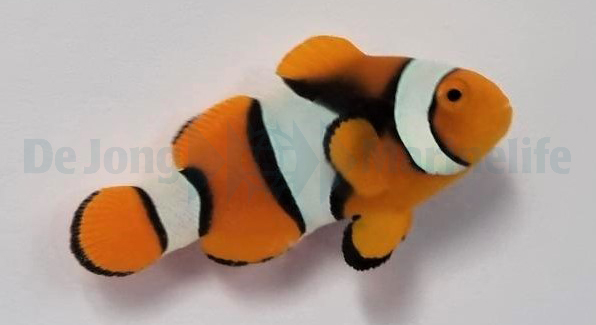
from: €25.00
 If you purchase this product you will earn 125-175 Points that you can spend on livestock in our local shop in Portlaoise.
If you purchase this product you will earn 125-175 Points that you can spend on livestock in our local shop in Portlaoise.


Amphiprion percula, commonly known as the Percula clownfish, is the smallest anemonefish and known by almost everybody before they even start a saltwater tank, thanks to the movie ‘Finding Nemo’. In fact, a lot of people get drawn into the hobby because of this fish. It’s also one of the easiest fish to breed if you want to start breeding saltwater fish. This is the reason why most fish are tank bred these days and more and more ‘designer’ variants are coming on the market each year. A. percula is easily recognized and can only be confused with A. ocellaris. Both are bright orange with three vertical white bands. The main differences are that ocellaris has darker eyes, 11 versus 10 dorsal spines and most notable very thin black lines next to the white bands versus a lot of black in percula.
These anemonefish can best be kept as a pair. When buying a pair you don’t need to worry about male or female because these fish are hermaphroditic. This means the most dominant fish will automatically turn into the female when there is no other female around. Food wise, these fish are easy to feed. They’re omnivores and will eat almost anything you offer. Just make sure they receive a balanced diet of live/frozen food and be sure to include some good quality pellets or flakes. These fish may have a hard time settling in an aquarium with aggressive fish, so it’s best to introduce these fish before other more aggressive fish are introduced.
As long as no predators are around (which usually isn’t the case in our aquaria), there is no need to add an anemone. They might find shelter in another large polyp coral or just hang around a certain rock. If you want to see the symbiotic relationship they’ve with their host in nature it’s best to buy a Heteractis crispa, H. magnifica or Stichodactyla gigantea, because those are the anemones it’s associated with in the wild.
This is the natural occuring black variant of the percula! Juveniles may still show a lot of orange but this gets darker as they mature!
SPECIFICATIONS
if you can't find product, please use form below or contact with me

